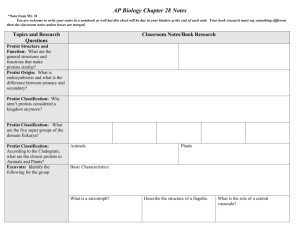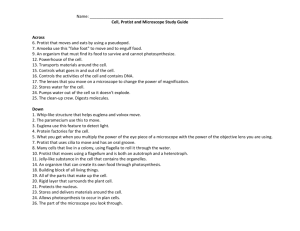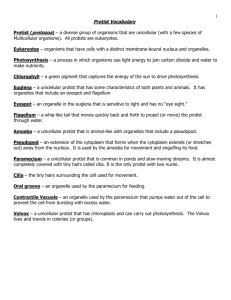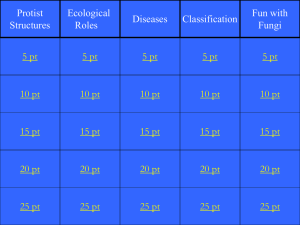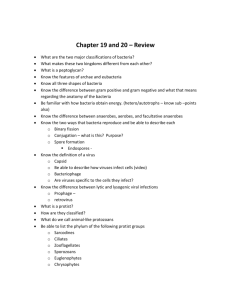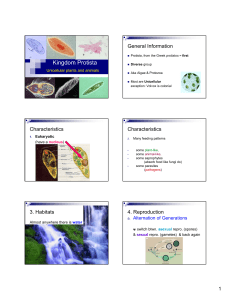Chapter 19 Homework Questions with Answers
advertisement
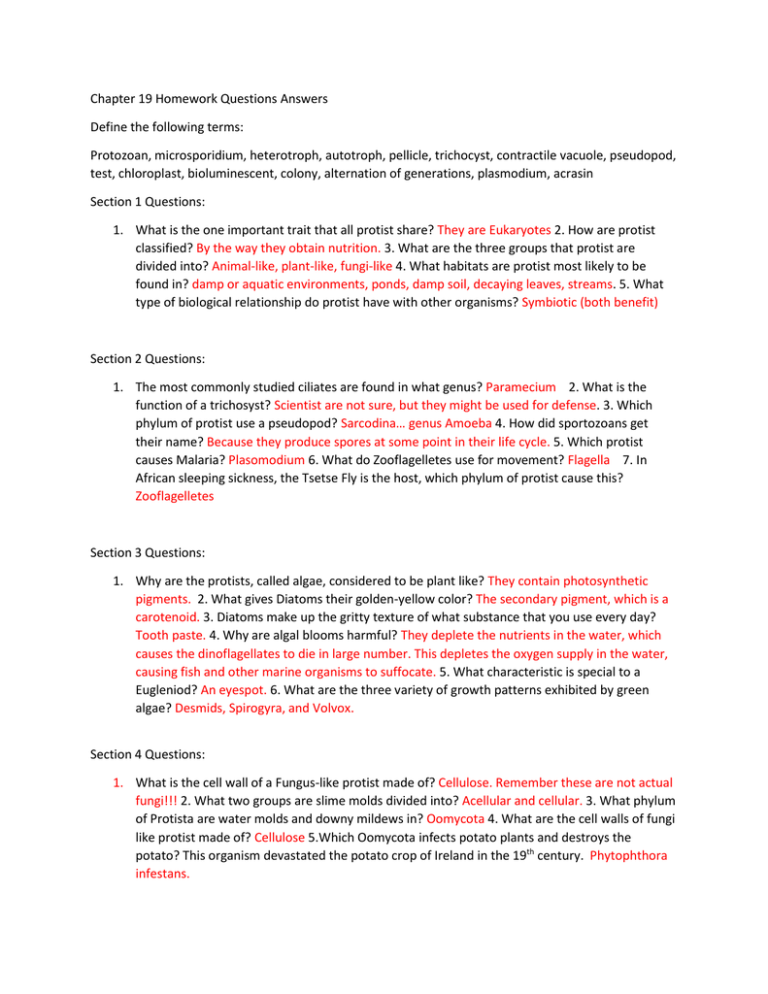
Chapter 19 Homework Questions Answers Define the following terms: Protozoan, microsporidium, heterotroph, autotroph, pellicle, trichocyst, contractile vacuole, pseudopod, test, chloroplast, bioluminescent, colony, alternation of generations, plasmodium, acrasin Section 1 Questions: 1. What is the one important trait that all protist share? They are Eukaryotes 2. How are protist classified? By the way they obtain nutrition. 3. What are the three groups that protist are divided into? Animal-like, plant-like, fungi-like 4. What habitats are protist most likely to be found in? damp or aquatic environments, ponds, damp soil, decaying leaves, streams. 5. What type of biological relationship do protist have with other organisms? Symbiotic (both benefit) Section 2 Questions: 1. The most commonly studied ciliates are found in what genus? Paramecium 2. What is the function of a trichosyst? Scientist are not sure, but they might be used for defense. 3. Which phylum of protist use a pseudopod? Sarcodina… genus Amoeba 4. How did sportozoans get their name? Because they produce spores at some point in their life cycle. 5. Which protist causes Malaria? Plasomodium 6. What do Zooflagelletes use for movement? Flagella 7. In African sleeping sickness, the Tsetse Fly is the host, which phylum of protist cause this? Zooflagelletes Section 3 Questions: 1. Why are the protists, called algae, considered to be plant like? They contain photosynthetic pigments. 2. What gives Diatoms their golden-yellow color? The secondary pigment, which is a carotenoid. 3. Diatoms make up the gritty texture of what substance that you use every day? Tooth paste. 4. Why are algal blooms harmful? They deplete the nutrients in the water, which causes the dinoflagellates to die in large number. This depletes the oxygen supply in the water, causing fish and other marine organisms to suffocate. 5. What characteristic is special to a Eugleniod? An eyespot. 6. What are the three variety of growth patterns exhibited by green algae? Desmids, Spirogyra, and Volvox. Section 4 Questions: 1. What is the cell wall of a Fungus-like protist made of? Cellulose. Remember these are not actual fungi!!! 2. What two groups are slime molds divided into? Acellular and cellular. 3. What phylum of Protista are water molds and downy mildews in? Oomycota 4. What are the cell walls of fungi like protist made of? Cellulose 5.Which Oomycota infects potato plants and destroys the potato? This organism devastated the potato crop of Ireland in the 19th century. Phytophthora infestans.
